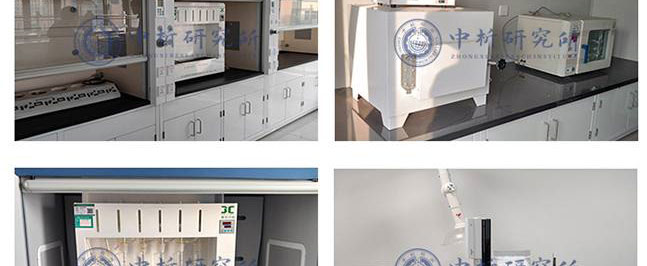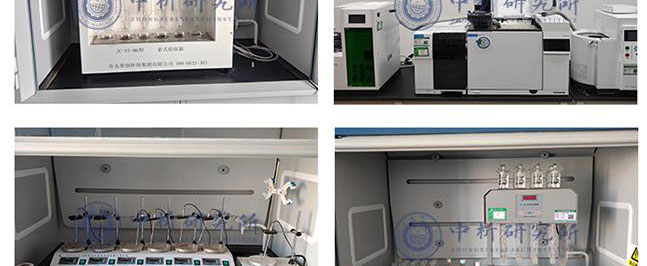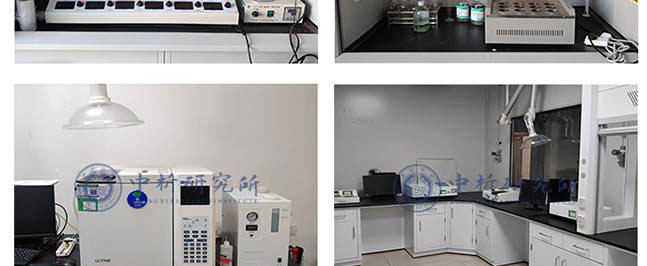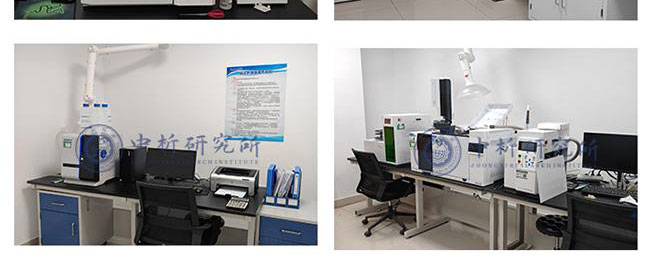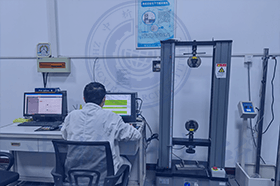國(guó)家標(biāo)準(zhǔn) GB/T 10299-1988 城鎮(zhèn)供熱保溫材料技術(shù)條件
【適用范圍】本標(biāo)準(zhǔn)規(guī)定了城鎮(zhèn)供熱中用于介質(zhì)溫度不大于350℃的蒸汽和介質(zhì)溫度不大于150℃的熱水使用的保溫材料及其制品的技術(shù)要求與檢驗(yàn)方法。
本標(biāo)準(zhǔn)適用于在城鎮(zhèn)供熱行業(yè)新建、擴(kuò)建、改建、運(yùn)行維護(hù)中所使用的保溫材料及其制品的選用、質(zhì)量檢驗(yàn)和工程驗(yàn)收。
【中國(guó)標(biāo)準(zhǔn)分類(lèi)】 P46 供熱、供氣、空調(diào)及制冷工程 【國(guó)際標(biāo)準(zhǔn)分類(lèi)】 91.140.10-中央供熱系統(tǒng)
行業(yè)標(biāo)準(zhǔn) DL/T 776-2001 火力發(fā)電廠保溫材料技術(shù)條件
【適用范圍】 本標(biāo)準(zhǔn)規(guī)定了火力發(fā)電廠保溫材料的技術(shù)條件與檢驗(yàn)方法。 本標(biāo)準(zhǔn)適用于對(duì)各種類(lèi)型電廠機(jī)組在新建、擴(kuò)建及檢修、維護(hù)中所采用的保溫材料及其制品的選擇、驗(yàn)收及質(zhì)量監(jiān)督。
【中國(guó)標(biāo)準(zhǔn)分類(lèi)】 Q25 建材產(chǎn)品 【國(guó)際標(biāo)準(zhǔn)分類(lèi)】 27.100-電站綜合
行業(yè)標(biāo)準(zhǔn) FZ/T 64002-2021 復(fù)合保溫材料 金屬鍍層復(fù)合絮片
【適用范圍】本文件規(guī)定了復(fù)合保溫材料——金屬鍍層復(fù)合絮片的術(shù)語(yǔ)和定義、產(chǎn)品分類(lèi)、技術(shù)要求、試驗(yàn)和檢驗(yàn)方法、檢驗(yàn)規(guī)則、包裝、標(biāo)志、運(yùn)輸和貯存。
本文件適用于以熱塑性滌綸、錦綸等金屬鍍層織物與滌綸纖維絮片為主體原料,經(jīng)復(fù)合加工而成的金屬鍍層復(fù)合絮片。
【中國(guó)標(biāo)準(zhǔn)分類(lèi)】 W59 紡織制品 【國(guó)際標(biāo)準(zhǔn)分類(lèi)】 59.080.99-其他紡織產(chǎn)品標(biāo)準(zhǔn)
行業(yè)標(biāo)準(zhǔn) FZ/T 64002-2011 復(fù)合保溫材料 毛復(fù)合絮片
【適用范圍】本標(biāo)準(zhǔn)規(guī)定了作為保溫制品填充料的毛復(fù)合絮片的產(chǎn)品分類(lèi)、品種規(guī)格、要求、試驗(yàn)方法、檢驗(yàn)規(guī)則、標(biāo)志、包裝、運(yùn)輸和貯存等。本標(biāo)準(zhǔn)適用于以毛或毛與其他纖維混合材料為絮層原料,復(fù)合加工而成的絮片。其它類(lèi)似產(chǎn)品可參照?qǐng)?zhí)行。
【中國(guó)標(biāo)準(zhǔn)分類(lèi)】 W59 紡織制品 【國(guó)際標(biāo)準(zhǔn)分類(lèi)】 59.080.99-其他紡織產(chǎn)品標(biāo)準(zhǔn)
行業(yè)標(biāo)準(zhǔn) FZ/T 64006-1996 復(fù)合保溫材料 毛型復(fù)合絮片
【適用范圍】本標(biāo)準(zhǔn)規(guī)定了作為服裝和被褥保溫填充料的毛型復(fù)合絮片的產(chǎn)品分類(lèi)、品種規(guī)格、技術(shù)要求、分等規(guī)定、試驗(yàn)方法、檢驗(yàn)規(guī)則、標(biāo)志、包裝和貯運(yùn)等。rnt本標(biāo)準(zhǔn)適用于鑒定以毛或毛與其他纖維混合材料為絮層原料,以單層或多層薄型材料為復(fù)合基,經(jīng)針刺等復(fù)合加工而成的毛型復(fù)合絮片的品質(zhì)。其他類(lèi)似產(chǎn)品的品質(zhì)可參照本標(biāo)準(zhǔn)有關(guān)條款評(píng)定。
【中國(guó)標(biāo)準(zhǔn)分類(lèi)】 W04 紡織綜合 【國(guó)際標(biāo)準(zhǔn)分類(lèi)】 59.100-復(fù)合增強(qiáng)材料
行業(yè)標(biāo)準(zhǔn) FZ/T 64020-2011 復(fù)合保溫材料 化纖復(fù)合絮片
【適用范圍】本標(biāo)準(zhǔn)規(guī)定了作為保溫制品填充料的化纖復(fù)合絮片的產(chǎn)品分類(lèi)、品種規(guī)格、要求、試驗(yàn)方法、檢驗(yàn)規(guī)則、標(biāo)志、包裝、儲(chǔ)運(yùn)等。本標(biāo)準(zhǔn)適用于以化學(xué)纖維為主要原料(化纖≥50%),經(jīng)復(fù)合加工而成的化纖復(fù)合絮片。其它類(lèi)似產(chǎn)品可參照?qǐng)?zhí)行。
【中國(guó)標(biāo)準(zhǔn)分類(lèi)】 W59 紡織制品 【國(guó)際標(biāo)準(zhǔn)分類(lèi)】 59.080.99-其他紡織產(chǎn)品標(biāo)準(zhǔn)
行業(yè)標(biāo)準(zhǔn) JC/T 998-2006 噴涂聚氨酯硬泡體保溫材料
【適用范圍】本標(biāo)準(zhǔn)規(guī)定了噴涂聚氨酯硬泡體保溫材料(簡(jiǎn)稱SPF)的定義、分類(lèi)、要求、試驗(yàn)方法、檢驗(yàn)規(guī)則、標(biāo)志、包裝、運(yùn)輸與貯存。n本標(biāo)準(zhǔn)適用于現(xiàn)場(chǎng)噴涂法施工的聚氨酯硬泡體非外露保溫材料。
【中國(guó)標(biāo)準(zhǔn)分類(lèi)】 Q17 建材產(chǎn)品 【國(guó)際標(biāo)準(zhǔn)分類(lèi)】 91.060.30-天花板、地板、樓梯
行業(yè)標(biāo)準(zhǔn) JG/T 228-2015 建筑用混凝土復(fù)合聚苯板外墻外保溫材料
【適用范圍】本標(biāo)準(zhǔn)規(guī)定了建筑用混凝土復(fù)合聚苯板外墻外保溫材料,即現(xiàn)澆混凝土復(fù)合聚苯板外墻外保系統(tǒng)材料的術(shù)語(yǔ)和定義、分類(lèi)、一般要求、要求、試驗(yàn)方法、檢驗(yàn)規(guī)則、產(chǎn)品交付文件、標(biāo)志、包裝、運(yùn)輸和貯存。rn本標(biāo)準(zhǔn)適用于民用建筑采用的現(xiàn)澆混凝土復(fù)合聚苯板外墻外保溫系統(tǒng)。
【中國(guó)標(biāo)準(zhǔn)分類(lèi)】 P32 工業(yè)與民用建筑工程 【國(guó)際標(biāo)準(zhǔn)分類(lèi)】 91.120.10-絕熱
行業(yè)標(biāo)準(zhǔn) SDJ 68-1985 火力發(fā)電廠熱力設(shè)備和管道保溫材料技術(shù)條件與檢驗(yàn)方法
【適用范圍】
【中國(guó)標(biāo)準(zhǔn)分類(lèi)】 Q25 電力、核工業(yè)工程 【國(guó)際標(biāo)準(zhǔn)分類(lèi)】 91.120.10-絕熱
地方標(biāo)準(zhǔn) CNS 2177-1995 玻璃棉保溫材料
【適用范圍】本標(biāo)準(zhǔn)規(guī)定整體服務(wù)數(shù)字網(wǎng)絡(luò)(Integrated Services Digital Network,簡(jiǎn)稱 ISDN)第 I 型網(wǎng)絡(luò)終接器(Network Termination 簡(jiǎn)稱 NT1),系為一裝設(shè)于網(wǎng)絡(luò)端與用戶終端設(shè)備(Customer Premise Equipment,簡(jiǎn)稱 CPE)之間,適用于 ISDN 2B+D 基本速率接口(Basic Rate Interfa
【中國(guó)標(biāo)準(zhǔn)分類(lèi)】 Q25 建材產(chǎn)品 【國(guó)際標(biāo)準(zhǔn)分類(lèi)】 17.200.20-溫度測(cè)量?jī)x器儀表
地方標(biāo)準(zhǔn) CNS 3657-2017 人造礦物纖維保溫材料
【適用范圍】本標(biāo)準(zhǔn)適用于人造礦物纖維之保溫材料,且其制造原料不得含有石棉。
【中國(guó)標(biāo)準(zhǔn)分類(lèi)】 Q25 建材產(chǎn)品 【國(guó)際標(biāo)準(zhǔn)分類(lèi)】 91.100.60-隔聲和絕熱材料
地方標(biāo)準(zhǔn) CNS 3657-1973 類(lèi)真空隔熱保溫材料
【適用范圍】本標(biāo)準(zhǔn)規(guī)定了類(lèi)真空隔熱保溫材料的產(chǎn)品分類(lèi)和標(biāo)記、要求、實(shí)驗(yàn)方法、檢驗(yàn)規(guī)則及標(biāo)志、包換、運(yùn)輸、貯存。
本標(biāo)準(zhǔn)適用于類(lèi)真空隔熱陶瓷粉生產(chǎn)的保溫材料。
【中國(guó)標(biāo)準(zhǔn)分類(lèi)】 Q15 建材產(chǎn)品 【國(guó)際標(biāo)準(zhǔn)分類(lèi)】 91.060.10-墻、隔墻、房屋正面
地方標(biāo)準(zhǔn) DB37/T 3724-2019 封縫料與外墻保溫材料和終飾系統(tǒng)的使用指南
【適用范圍】1.1 This guide describes the use of single and multi-component cold-applied joint sealants or precured sealant systems for joint sealing applications or both in buildings using Exterior Insulation and Finish Systems (EIFS) on one or both sides of the joint. Refer to 10.1 for joint seal geometries. 1.2 The elastomeric sealants described by this guide meet the requirements of Specifications C834 C920 or C1311. 1.3 The values stated in SI units are to be regarded as standard. No other units of measurement are included in this standard. 1.4 This standard does not purport to address all of the safety concerns if any associated with its use. It is the responsibility of the user of this standard to establish appropriate safety and health practices and determine the applicability of regulatory limitations prior to use. 1.5 There are no ISO standards similar or equivalent to this ASTM standard.
【中國(guó)標(biāo)準(zhǔn)分類(lèi)】 Q24 建材產(chǎn)品 【國(guó)際標(biāo)準(zhǔn)分類(lèi)】 91.100.50-粘合料、密封材料
國(guó)外標(biāo)準(zhǔn) ASTM C1488-2004e1 纖維質(zhì)松散料保溫材料模擬老化規(guī)程
【適用范圍】
The purpose of this practice is to simulate the aging process of cellulosic loose-fill insulation. By identifying any changes in flame retardant permanency due to the aging process producers can design loose-fill insulation to meet or exceed material specifications throughout the product life cycle.
1.1 This practice covers a procedure to simulate the aging process of cellulosic loose-fill insulation by subjecting it to controlled laboratory conditions of temperature and humidity so that the insulation will be further evaluated particularly for critical radiant flux characteristics.
1.2 It is not the intent of this practice to establish aging conditions that represent all possible exposures.
1.3 The values stated in inch-pound units are to be regarded as standard. The values given in parentheses are mathematical conversions to SI units that are provided for information only and are not considered standard.
1.4 This standard does not purport to address all of the safety concerns if any associated with its use. It is the responsibility of the user of this standard to establish appropriate safety and health practices and determine the applicability of regulatory requirements prior to use.
【中國(guó)標(biāo)準(zhǔn)分類(lèi)】 Q25 建材產(chǎn)品 【國(guó)際標(biāo)準(zhǔn)分類(lèi)】 91.100.60-隔聲和絕熱材料
國(guó)外標(biāo)準(zhǔn) ASTM C165-2007(2017) 保溫材料壓縮性能測(cè)量方法
【適用范圍】1.1 This test method covers two procedures for determining the compressive resistance of thermal insulations. 1.1.1 Procedure A covers thermal insulations having an approximate straight-line portion of a load-deformation curve with or without an identifiable yield point as shown in Figs. 1 and 2. Such behavior is typical of most rigid board or block-type insulations. FIG. 1 Procedure A—Straight Line Portion with Definite Yield Point FIG. 2 Procedure A—Straight Line Portion but no Definite Yield Point 1.1.2 Procedure B covers thermal insulations that become increasingly more stiff as load is increased as shown in Fig. 3. Such behavior is typical of fibrous batt and blanket insulations that have been compressed previously to at least the same deformation by compression packaging or mechanical softening. FIG. 3 Procedure B—Increasing Stiffness 1.2 It is recognized that the classification of materials under Procedures A and B shall not hold in all cases. For example some batt or blanket materials that have not been compression packaged will exhibit behavior more typical of Procedure A for their first loadings. Also some higher density fibrous insulation boards that have been precompressed will exhibit load-deformation curves more typical of Procedure B. There will also be thermal insulations with load-deformation curves that follow none of the three types shown here; that is curves with no straight-line portion curves with compaction areas and curves that change from negative to positive slope. 1.3 This test method does not cover reflective or loose fill insulations. 1.4 The values stated in inch-pound units are to be regarded as the standard. The values given in parentheses are for information only. 1.5 This standard does not purport to address all of the safety concerns if any associated with its use. It is the responsibility of the user of this standard to establ
【中國(guó)標(biāo)準(zhǔn)分類(lèi)】 Q25 建材產(chǎn)品 【國(guó)際標(biāo)準(zhǔn)分類(lèi)】 91.100.60-隔聲和絕熱材料
國(guó)外標(biāo)準(zhǔn) ASTM C302-2013(2017) 預(yù)制管道外包保溫材料密度和尺寸試驗(yàn)方法
【適用范圍】1.1 This test method covers the determination of the dimensions and density after conditioning of preformed pipe insulation. 1.1.1 Procedure A is applicable to sections of one-piece pipe covering or to sections of segmental pipe covering that can be joined together concentrically and measured as one-piece. 1.1.2 Procedure B is applicable to segmental pipe covering where each section of material is measured. 1.1.3 Procedure C is applicable to sections of one-piece pipe covering such as soft foam or mineral wool materials where it is possible to penetrate the material. 1.2 The values stated in inch-pound units are to be regarded as the standard. The values given in parentheses are for information only. 1.3 This standard does not purport to address all of the safety concerns if any associated with its use. It is the responsibility of the user of this standard to establish appropriate safety health and environmental practices and determine the applicability of regulatory limitations prior to use. 1.4 This international standard was developed in accordance with internationally recognized principles on standardization established in the Decision on Principles for the Development of International Standards Guides and Recommendations issued by the World Trade Organization Technical Barriers to Trade (TBT) Committee.
【中國(guó)標(biāo)準(zhǔn)分類(lèi)】 Q45 耐火材料 【國(guó)際標(biāo)準(zhǔn)分類(lèi)】 27.220-熱回收、絕熱
國(guó)外標(biāo)準(zhǔn) ASTM C450-2018 公稱管道規(guī)格管道保溫套和容器保溫材料制造規(guī)程
【適用范圍】1.1 This practice provides tables of dimensions of preformed pipe insulation that shall be used in fabricating insulation covers for use on valves ells tees flanges and vessels in the pressure range from 150 to 1500 psi (1 to 10 MPa). These tables which are part of this standard are published separately as the ASTM Recommended Dimensional Standards for Fabrication of Thermal Insulation Fitting Covers for NPS Piping and Vessel Lagging. In addition the ADJC0450A tables for Short Radius (SR) and Long Radius (LR) Elbows Insulation Fitting Covers for piping are included in this practice. The tables were developed to provide dimensions for shop fabrication use in forming pipe insulation fitting covers on NPS pipe operating at high temperature and low temperature. The tables also include dimensions for use in forming thermal insulation into curved segments and lagging for application on vessels. This practice does not apply to reflective-type insulation insulation on screwed elbows Short Radius (SR) and Long Radius (LR) Elbows Fitting Covers for tubing dutchman (extended leg) insulation fitting covers double-layered staggered-joint pipe insulation fitting covers flexible preformed pipe-tube elastomeric foam fitting covers in accordance with Specification C534/C534M or polyolefin foam fitting covers in accordance with Specification C1427. 1.1.1 Refer to Guide C1710 when referring to insulation materials for fabrication of preformed flexible closed cell insulated 90° elbows tees or similar products. 1.2 This practice does not specify fabrication methods. Thermal insulation for fitting covers is formed by numerous fabrication methods. In general insulations are cut by circular or band saws shaped by grinders or millers or molded/preformed. Each method has certain advantages and disadvantages depending upon the material to be formed number of cuts required material waste permissible and quantity of fittings being produced. Fitting
【中國(guó)標(biāo)準(zhǔn)分類(lèi)】 Q25 建材產(chǎn)品 【國(guó)際標(biāo)準(zhǔn)分類(lèi)】 27.220-熱回收、絕熱
國(guó)外標(biāo)準(zhǔn) ASTM C1763-2019 用保溫材料浸漬法測(cè)定吸水性的試驗(yàn)方法
【適用范圍】
1.1 This test method determines the amount of water retained (excluding surface water) by flat specimens of thermal insulations after these materials have been fully immersed in liquid water for a prescribed time interval under isothermal conditions. This test method is intended to be used for the characterization of materials in the laboratory. It is not intended to simulate any particular environmental condition potentially encountered in building construction applications.
1.2 This test method does not address all the possible mechanisms of water intake and retention and related phenomena for thermal insulations. It relates only to those conditions outlined in 1.1. Determination of moisture accumulation in thermal insulations due to partial immersion water vapor transmission internal condensation freeze-thaw cycling or a combination of these effects requires different test procedures.
1.3 This test method does not address or attempt to quantify the drainage characteristics of materials.
1.4 The values stated in either SI units or inch-pound units are to be regarded separately as standard. The values stated in each system are not necessarily exact equivalents; therefore to ensure conformance with the standard each system shall be used independently of the other and values from the two systems shall not be combined.
1.5 This standard does not purport to address all of the safety concerns if any associated with its us
【中國(guó)標(biāo)準(zhǔn)分類(lèi)】 Q25 建材產(chǎn)品 【國(guó)際標(biāo)準(zhǔn)分類(lèi)】 91.100.60-隔聲和絕熱材料
國(guó)外標(biāo)準(zhǔn) ASTM C1878-2019 保溫材料用蒸汽緩凝劑耐地表水性能測(cè)試方法
【適用范圍】
1.1 This test method details a procedure for the determination of the surface water resistance of a vapor retarder by measurement of the quantity of water absorbed in a specified time by the service-exposed surface of a vapor retarder intended for use on thermal insulation.
1.2 This test method covers vapor retarders that are expected to withstand intermittent or occasional exposure to liquid water on the exposed side. Examples of this exposure are condensation and light rain during installation before a structure is enclosed.
1.3 This method does not cover vapor retarders intended for exposure to the elements in outdoor applications.
1.4 This method does not cover thermal insulation products that also act as vapor retarders such as elastomeric foam and cellular glass.
1.5 In the test the specimen is exposed to a specified volume of water over a given exposure area with a resultant head pressure.
1.6 The test method is based on Test Method D3285 (withdrawn) the so-called “Cobb” test used for paper.
1.7 The values stated in SI units are to be regarded as standard.
1.8 This standard does not purport to ad
【中國(guó)標(biāo)準(zhǔn)分類(lèi)】 G71 化學(xué)助劑、表面活性劑、催化劑、水處理劑 【國(guó)際標(biāo)準(zhǔn)分類(lèi)】 71.100-化工產(chǎn)品
國(guó)外標(biāo)準(zhǔn) BS 3958 Pt.1-1982 隔熱保溫材料 第1 部分: 氧化鎂的預(yù)制保溫層
【適用范圍】
【中國(guó)標(biāo)準(zhǔn)分類(lèi)】 Q04 建材產(chǎn)品 【國(guó)際標(biāo)準(zhǔn)分類(lèi)】 91.100.01-建筑材料綜合
國(guó)外標(biāo)準(zhǔn) JIS A9526-2006 噴鍍硬質(zhì)氨基甲酸乙酸泡沫保溫材料
【適用范圍】この規(guī)格は,主として建築物の斷熱材として使用する,建築現(xiàn)場(chǎng)又は工場(chǎng)で製造する吹付け硬質(zhì)ウレタンフオームについて規(guī)定する。
【中國(guó)標(biāo)準(zhǔn)分類(lèi)】 G32 合成材料 【國(guó)際標(biāo)準(zhǔn)分類(lèi)】 91.120.10-絕熱
國(guó)外標(biāo)準(zhǔn) JIS A9504-2004 建筑用隔熱、保溫材料及制品--決定熱性能說(shuō)明值及設(shè)計(jì)值的順序
【適用范圍】この規(guī)格は,熱的に均質(zhì)な建築用斷熱?保溫材料,製品の熱性能の宣言値及び設(shè)計(jì)値の決定方法についで規(guī)定する。また,この規(guī)格は,溫度,含水率などのある條件(セットの條件)のもとで得られる性能値を.別の溫度.含水率などの條件のもとにおける性能値に換算する手順を示すものである:これらの手順は-30℃~+60℃の周?chē)鞙囟趣摔い朴袆郡扦ⅳ搿?/span>
【中國(guó)標(biāo)準(zhǔn)分類(lèi)】 Q25 建材綜合 【國(guó)際標(biāo)準(zhǔn)分類(lèi)】 91.120.10-絕熱
1、可以幫助生產(chǎn)商識(shí)別產(chǎn)品的潛在問(wèn)題或缺陷,并及時(shí)改進(jìn)生產(chǎn)工藝,保障產(chǎn)品的品質(zhì)和安全性。
2、可以為生產(chǎn)商提供科學(xué)的數(shù)據(jù),證明其產(chǎn)品符合國(guó)際、國(guó)家和地區(qū)相關(guān)標(biāo)準(zhǔn)和規(guī)定,從而增強(qiáng)產(chǎn)品的市場(chǎng)競(jìng)爭(zhēng)力。
3、可以評(píng)估產(chǎn)品的質(zhì)量和安全性,確保產(chǎn)品能夠達(dá)到預(yù)期效果,同時(shí)減少潛在的健康和安全風(fēng)險(xiǎn)。
5、可以確定性能和特性以及元素,例如力學(xué)性能、化學(xué)性質(zhì)、物理性能、熱學(xué)性能等,從而為產(chǎn)品設(shè)計(jì)、制造和使用提供參考。
4、雙方將就檢測(cè)項(xiàng)目進(jìn)行詳細(xì)溝通,并簽署保密協(xié)議,以保證客戶信息的保密性。在此基礎(chǔ)上,我們將進(jìn)行測(cè)試試驗(yàn).
















